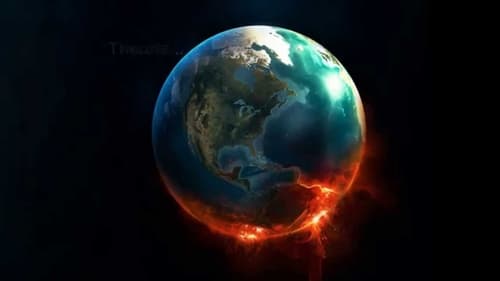
Executive Producer
Epic flooding, millions without power, numerous fatalities, gridlock and heartbreak; go inside the megastorm to learn why it happened and how one could hit again. This documentary is an in-depth one-hour special on the wrath and destruction of Hurricane Sandy.

Producer
Epic flooding, millions without power, numerous fatalities, gridlock and heartbreak; go inside the megastorm to learn why it happened and how one could hit again. This documentary is an in-depth one-hour special on the wrath and destruction of Hurricane Sandy.

Executive Producer
An investigation by Professor of Geological Sciences, Roger Bilham, of the science behind the earthquake and tsunami off the coast of Japan on March 11, 2011.

Executive Producer
National Geographic Channel se aventura en un tiempo remoto, un tiempo en el que la Tierra estaba poblada por gigantes: alacranes del tamaño de los lobos, libélulas del tamaño de águilas, ciempiés de dos metros de largo y bosques de helechos de casi 30 metros de altura. Un tiempo en el que nuestro planeta pasó de ser una bola de roca líquida hirviendo a convertirse en un páramo helado con capas de hielo de hasta de tres kilómetros de espesor. Un escenario, que no es fruto de la ciencia ficción, sino la crónica exacta de la formación de nuestro propio planeta.

Executive Producer
The sinking of the Titanic was far more than a simple accident. It was a tragedy that could have been prevented. It was the result of a long chain of mistakes: a fatal series of avoidable human errors that sent the Titanic and more than half of her passengers to their watery graves. Based around the official inquiry held immediately after the event, plus evidence that's come to light since the wreck of the Titanic was discovered in 1985, National Geographic, in this drama-documentary special, answers the question: Who Sank the Titanic?

Executive Producer
El 10 de abril de 1912, el RMS Titanic se embarcó en su viaje inaugural, navegando desde Southampton, Inglaterra, a la ciudad de Nueva York. Uno de los transatlánticos de pasajeros más grandes y lujosos de la época, el Titanic también estaba equipado con compartimentos estancos, lo que llevó a muchos a considerar el barco insumergible; un marinero anónimo afirmó que "Dios mismo no podía hundir este barco". El 14 de abril, sin embargo, el barco chocó contra un iceberg y al día siguiente se hundió temprano. Murieron unas 1.500 personas.

Executive Producer
On the morning of August 27, 1883, the rumbling volcano of Krakatoa stood more than 6,000 feet high, with a diameter of approximately 10 miles. Later that day, this giant cone exploded so violently it was literally blown away. The effects of the volcanic explosion caused a tidal wave more than 140 feet high; one ship was carried more than two miles inland. Hail-sized stones fell as far as 100 miles away, and the city of Jakarta fell into total darkness. For many of the area's inhabitants, Armageddon had arrived. Over 36,000 people were killed immediately, and countries all over the globe were affected by the volcano's devastating after-effects.






